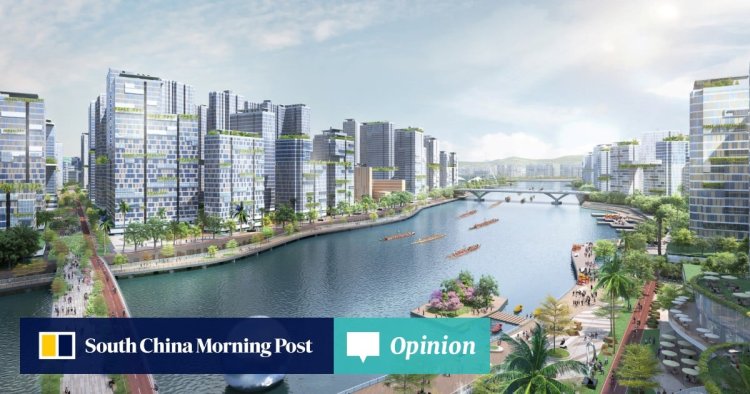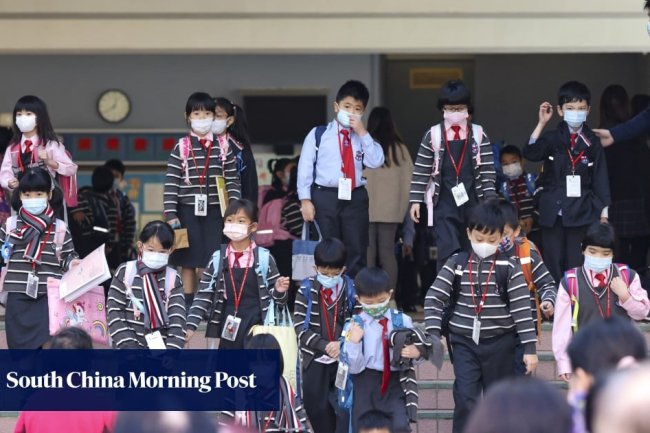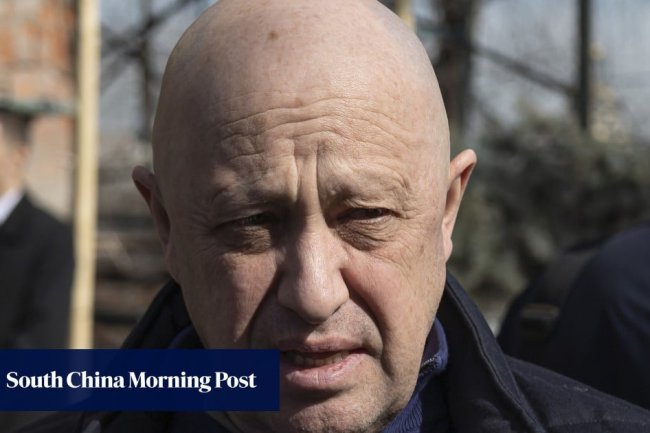How Hong Kong’s artificial islands project can tell the city’s story well
2023.05.10 08:15Building up long-term land supply for affordable housing and commercial use requires looking beyond the high-density hub around Victoria Harbour. A paradigm shift in planning, encompassing the Northern Metropolis development and beyond, has been taking shape in recent years.This will achieve a better development balance between the north and south of the city – in terms of job opportunities, land prices and transport – improve livability and integrate Hong Kong more organically into the Greater Bay Area.The development of the northern New Territories is, in fact, already under way, but an obstacle to progress is the centuries-old land ownership structure. Rezoning land and making provisions for businesses located on brownfield land have been challenging.A holistic solution that takes into account opportunities in the Greater Bay Area is needed, one based on a bottom-up approach that addresses the needs of different industries.The Kau Yi Chau artificial islands project p


Building up long-term land supply for affordable housing and commercial use requires looking beyond the high-density hub around Victoria Harbour. A paradigm shift in planning, encompassing the Northern Metropolis development and beyond, has been taking shape in recent years.
This will achieve a better development balance between the north and south of the city – in terms of job opportunities, land prices and transport – improve livability and integrate Hong Kong more organically into the Greater Bay Area.
The development of the northern New Territories is, in fact, already under way, but an obstacle to progress is the centuries-old land ownership structure. Rezoning land and making provisions for businesses located on brownfield land have been challenging.
A holistic solution that takes into account opportunities in the Greater Bay Area is needed, one based on a bottom-up approach that addresses the needs of different industries.
The Kau Yi Chau artificial islands project proposes to reclaim 1,000 hectares of land, free from legacy landownership issues, while realising our goal of building a green, resilient and smart city.
Environmental groups’ concerns about rising sea levels can be effectively mitigated. A Y-shaped water channel will be left between the three islands to be constructed around Kau Yi Chau, to maintain water quality and flow velocity. A higher site level and sea walls will address the risk of flooding and high waves during typhoons.
The other main hesitance relates to costs and financing. Of concern is the funding stress caused by implementing two massive development projects concurrently.
Our public coffers have already been diminished by reduced revenue and extra expenditure on Covid-19 pandemic relief, with the financial secretary predicting a deficit for this financial year. The city will also have to contend with rising expenditure due to an ageing population.
The Tanner Hill Workshop proposes ways to address the cost challenges, in addition to the government’s cost-saving and environmentally friendly plan to use the 15 million tonnes of inert construction waste generated annually as landfill material.
First, we should augment our construction labour force by judiciously importing project-specific qualified professionals and skilled workers, such as trained workers who will be available after the completion of the complex Shenzhen-Zhongshan Expressway. A steady labour supply from economies with a lower cost of living will bring down costs.
Second, our design and construction codes need to be updated so that advanced construction technologies using precision equipment can be adopted, removing inefficiencies typically caused by overdesigning.
Third, we should sharpen project management and governance expertise to reduce excessive subcontracting and improve procurement processes, for example, by employing artificial intelligence.
Do Hong Kong policymakers want to hear what residents think?
Finally, ingenious financing schemes should be devised with professional advice from financial and legal experts who excel in land project transactions and financing.
According to the government’s provisional financial results for the 2022-23 financial year, Hong Kong’s fiscal reserves stood at HK$834.8 billion (US$106.4 billion) on March 31. Financial Secretary Paul Chan Mo-po said he expects fiscal reserves to return to positive growth in the coming years. Still, we would prefer more financial comfort during the investment period of the artificial islands project, which is expected to cost HK$580 billion over 10-15 years.
In addition to issuing debt and public-private-partnerships, which the government is considering, it could adopt contractor financing or an initial public offering that allows the public to invest in their own future. The legal complexities are surmountable as long as the value of the landed properties is measurable.
With ongoing land sales, collection of other taxes and prudent cost control, the Kau Yi Chau project will not result in a structural deficit as some fear.
The project will create 250 hectares of new land for housing, and another 100 hectares for other economic use. In December, the government lowered its estimate for the revenue expected from land sales to HK$750 billion, higher than the total construction cost of HK$580 billion.
The project aims to construct around 200,000 new residential units, with 70 per cent allocated to public housing. We propose that these 140,000 public housing units be allocated entirely to a “New Home Ownership Scheme” that we advocated for previously in these columns, under which land premium would not be factored into the price of the flats, but income levels would be taken into account.
The value proposition of the Kau Yi Chau project also lies in the formation of a third central business district that will foster business activities with in situ labour supply. The hub’s proximity to the existing CBDs, the airport and well-planned infrastructure would appeal to state-owned and private businesses in southwest China, as well as those from countries that are part of the Belt and Road Initiative.
The project can be a shining example of telling a good Hong Kong story of collaboration between its industrious residents and a responsible government, entailing the joint efforts of urban planners, architects, engineers and builders, as well as financiers, appraisers and environmentalists.
At an economically turbulent time across the world, Hong Kong is at the critical point of reorienting its strategic positioning. History has shown that once-controversial bold long-term projects like Chek Lap Kok Airport turned out to be international achievements. With prudence and professionalism, unity and resolve, we can be successful again.
What's Your Reaction?

















